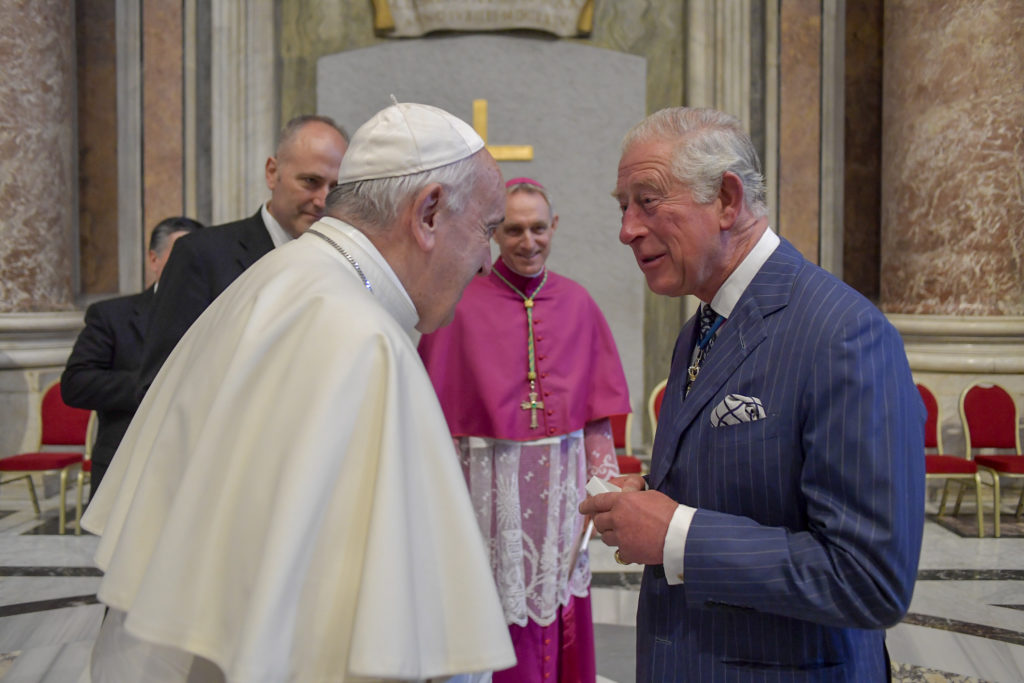Prince Charles meets Pope Francis during the canonisation of Cardinal Newman on October 13, 2019 in Vatican City. (Arthur Edwards – Pool/Getty Images)
Cardinal John Henry Newman was today (October 13) declared a saint by the Roman Catholic church in a service at the Vatican led by the Pope and attended by Prince Charles.
Tens of thousands of people went to the open-air ceremony in Rome.
Newman, England’s most famous Catholic convert who died in Birmingham in 1890, is the first English person to be made a saint in almost 50 years.
But questions remain over whether or not Newman – who was buried, at his request, in the same grave as his “friend” Ambrose St John, who he had lived with for 30 years – was a gay man.
“The Vatican is guilty of historical revisionism. It has erased from the official record all recognition of Cardinal Newman’s love for Ambrose St John and his wish to remain buried alongside him,” human rights campaigner Peter Tatchell said in a statement.
“Newman and St John were mentally and spiritually in love; sharing a long-term same-sex relationship. They were inseparable. They lived together for over 30 years, like a married husband and wife,” Tatchell added.
The question of Newman’s sexuality has been raised before. Newman called St John his “earthly light” and said, “From the first he loved me with an intensity of love.,,”
In 2008, the Vatican decided to dig up Newman’s remains and move them out of the grave he shared with his “priest friend” in preparation for sainthood.
The plot was excavated but no body was found – the wooden coffin containing Newman’s remains had rotted, leaving nothing behind.
Tatchell said: “Digging up Newman’s grave and separating the two men was an act of sacrilege, betrayal, disrespect and homophobia.”
“The homophobic desecration of Newman’s grave and the denial of Newman’s gayness is entirely consistent with the Vatican’s long-standing cover up of its many past and present gay priests, bishops, cardinals and popes,” he added.
But Father Ian Ker, writing in a Catholic Truth Society pamphlet, said that St John was the “equivalent of a brother” to Cardinal Newman.
“In an age that has almost lost the concept of affectionate friendship untouched by sexual attraction, such speculation was no doubt inevitable,” he said.
